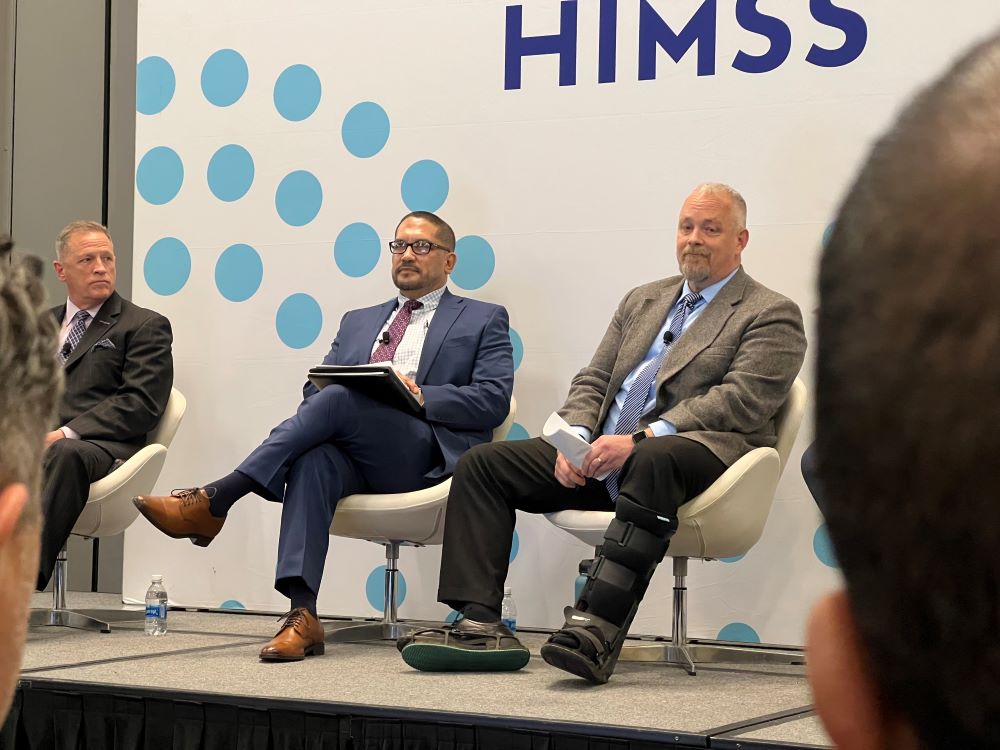Health Leaders Target Data Exchange to Improve Patient Care
Health IT leaders from SSA, FEHRM and VA discuss challenges and next steps for cross-government health data interoperability.

Data interoperability is a key component to effectively implementing solutions such as the joint federal electronic health record and making faster, more accurate decisions to improve patient care. The Federal Electronic Health Record Modernization (FEHRM) Office, Department of Veterans Affairs, Social Security Administration (SSA) and the Centers for Medicare & Medicaid Services (CMS) are looking at new ways to standardize data and processes through key components including governance and data management.
This is especially important with the massive cross-government initiative to move to a single, common electronic health record.
“We’re trying to make sure that we do deliver, and we work toward some standardized practices within the department,” VA Deputy CIO of the Electronic Health Record Modernization Integration Office (EHRM-IO) Laura Prietula said on a panel at the HIMSS conference in Chicago Tuesday. “How do we bring it back to our core so that we’re not delivering and deploying 172 different versions of the product again? … That way it will make it a repeatable process, and people can now expect what it is that you’re going to get at your medical center.”
VA is building a longitudinal platform to enable the agency to consume, exchange and use data at any time in the point of care.
“We want to make sure that your data is accessible, usable, computable, and it helps and does something,” Amanda Cournoyer, VA’s director of data and interoperability at EHRM-IO, said at the conference. “We’re moving to all standardized. We want FHIR APIs, we want open access, we want to be able to talk and exchange.”
CMS is improving interoperability by increasing and advancing health care data exchange functionality to better inform decision-making for patients and providers, support and improve patient care, and reduce the administrative burden on providers and payers.
“CMS is continuing to advance our goals to make health care data flow more freely and securely among payers, providers and patients by continuing to lay foundation to foster a more connected, modern health care system,” a CMS spokesperson told GovCIO Media & Research. “We are working toward this goal.”
Standardizing data into a computable format is key to enabling data-sharing and using other emerging technology tools such as natural language processing (NLP).
“Just having the data is not all the same. It’s not created equal,” FEHRM’s Acting Technical Director and Solutions Integration Director Lance Scott said at the HIMSS conference Tuesday.
SSA has around one million pending disability cases at the initial claims level. The agency’s Assistant Deputy Commissioner in the Office of Analytics, Review and Oversight Joe Lopez is investigating better, faster ways to gather and analyze data to improve decision-making on disability cases.
“Health information technology is one of our solutions that we need to leverage to make sure that we make decisions as quickly as possible… we have to look for every efficiency when we have health IT, so we can quickly request the medical evidence and receive it back within minutes or seconds.,” Lopez said. “The Office of Analytics is looking to gather all the data that SSA has to make data-driven decisions. You can’t make those decisions if the data is stored in all kinds of different locations, where you don’t have access.”
SSA only receives around 14% of its structured evidence electronically. SSA is leaning on leadership buy-in and partnerships to collaborate with EHR agencies and receive information quickly.
“We as an agency have to ensure that our leadership buys into this idea that we have to do everything that we can to work with our partners across the electronic health record organizations to receive that evidence electronically, so that we can use automation to go through it, to sift through it and call out the information that’s important,” Lopez said.
Looking ahead, health agencies are focusing on improving patient experience through new technology tools. The FEHRM recently launched a new pilot focusing on NLP. Scott said the Longitudinal Natural Language Processing Pilot will enable users to conduct an NLP search on the data, so when the patient comes into the clinician’s office, the clinician already has all the documents related to that issue ready.
“It makes the patient experience that much better,” Scott said.
This is a carousel with manually rotating slides. Use Next and Previous buttons to navigate or jump to a slide with the slide dots
-

How Agencies are Upskilling the Workforce in AI
Federal officials are putting in place new training and education methods to ensure its overall workforce understands the technology.
3m read -

Building Better Data Governance Across FDA
The agency is using emerging technology to tackle its data challenges.
19m listen -

Strategies for Effective Data Modernization
Data is the lifeblood of critical decisions and streamlines operations across the government, but many agencies struggle with inconsistent standards.
33m watch -

CDC Updates Public Health Data Strategy
Accelerating data sharing through capabilities like electronic case reporting make up a large portion of the new two-year plan.
3m read




